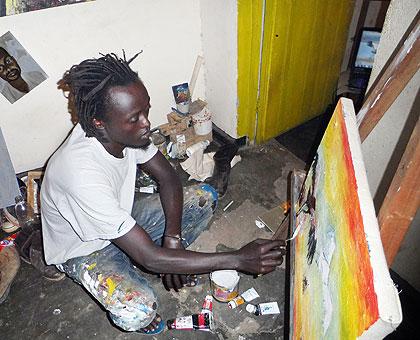Genocide survivor takes to painting message of love
FOUR STUNNING paintings on canvasses adorn the four walls of Shadrack Kayiranga’s sitting room in Kacyiru, a Kigali suburb.

Kayiranga at work. (Joseph Oindo)
